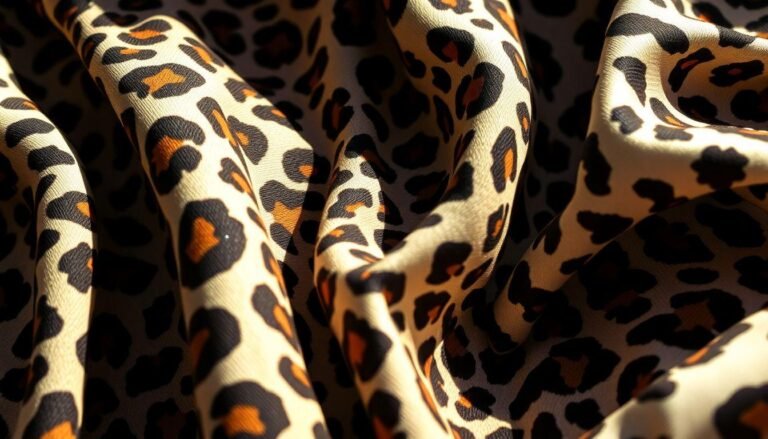Nature has always been our greatest designer, creating stunning patterns that have fascinated humans for centuries. From the distinctive stripes of a zebra to the mesmerizing spots of a leopard, animal skin print patterns offer endless inspiration for designers across various mediums. These patterns aren’t just visually striking—they tell stories of adaptation, survival, and evolution. Whether you’re refreshing your wardrobe, redesigning your living space, or seeking creative direction for your next artistic venture, the animal kingdom provides a rich palette of textures and motifs to explore.
Why Animal Prints Never Go Out of Style
Let’s face it—animal prints have remarkable staying power. They’ve been cycling through fashion and design trends for decades, sometimes as bold statements and other times as subtle accents. What makes these patterns so enduringly appealing? Perhaps it’s their connection to our primal instincts or their ability to add instant visual interest to otherwise simple designs. Whatever the reason, incorporating animal prints into your projects adds a timeless quality that transcends fleeting trends.
The Psychology Behind Our Attraction to Animal Patterns
Have you ever wondered why we’re so drawn to these wild patterns? Research suggests our fascination might be evolutionary. The high-contrast patterns of many animal skins trigger visual responses in our brains—patterns that once helped our ancestors identify predators or potential food sources. Today, these same visual triggers create interest and excitement in design contexts. They command attention while connecting us to something primal and authentic.
Classic Animal Prints to Consider for Your Next Project
Leopard: The Versatile Classic
Leopard print might just be the most versatile of all animal patterns. Its irregular spots against a warm, neutral background work across countless design applications. What’s particularly interesting about leopard print is how it can read as either a statement or a neutral, depending on how you use it.
Zebra: Bold Graphic Impact
There’s nothing quite like zebra print when you want to make a strong graphic statement. The stark black and white stripes create instant drama and can add movement to static designs. Zebra works particularly well in contemporary settings where its bold contrasts complement minimalist surroundings.
Snake: Sophisticated Texture
Snake print brings a subtle, sophisticated texture to designs. Its smaller scale pattern creates visual interest without overwhelming other elements, making it perfect for accessories or smaller applications. The natural variations in snake patterns—from python to cobra—offer different scales and dimensions to play with.
Emerging Animal Print Trends to Watch
Giraffe: The Subtle Statement
Giraffe print has been gaining popularity as a fresher alternative to more common animal patterns. Its irregular geometric shapes create interest while maintaining a certain subtlety that works well in contemporary designs. The warm, neutral color palette of natural giraffe print makes it surprisingly versatile.
Tiger: Bold Energy
Tiger print brings undeniable energy to any design. Its distinctive orange and black stripes create movement and vitality. While traditionally bold, tiger print can be adapted to more subtle colorways for versatile applications. It’s particularly effective when you want to create a focal point in your design.
How to Incorporate Animal Prints Thoughtfully
The key to using animal prints successfully is balance. Even the most enthusiastic animal print lovers know that a little goes a long way. Consider using these patterns as accents rather than the dominant element of your design. A leopard print pillow on a solid sofa, snake print accessories against a neutral outfit, or zebra print frames around artwork can add just the right amount of visual interest.
For those feeling more adventurous, larger applications like area rugs, wallpaper in small spaces, or statement furniture pieces can create striking focal points. The trick is to let the animal print be the star and keep surrounding elements simpler.
Ethical Considerations in Animal Print Design
It’s worth noting that the best animal skin print patterns are reproduced without harming actual animals. Today’s designers have countless options for creating stunning animal-inspired patterns through digital printing, sustainable textiles, and innovative materials that mimic natural textures without environmental harm. When sourcing materials for your projects, consider both aesthetic and ethical dimensions of your choices.
Conclusion
Whether you’re refreshing your wardrobe, redesigning a room, or creating graphics for a client, animal skin print patterns offer timeless inspiration that continues to evolve. From classic leopard to emerging favorites like giraffe, these natural designs provide rich visual texture and connection to the wild beauty of the animal kingdom. The key to success lies in thoughtful application—knowing when to make a bold statement and when to use these patterns as sophisticated accents. As with all great design elements, it’s about finding the perfect balance between inspiration and execution.







